Practical tips on creating a bathroom using vintage sanitaryware
© Robert Sanderson
Sam Coster, owner of Mongers of Hingham, gives his expert advice on the best way to fit a reclaimed bathroom
In the same way that you buy antiques for the story they tell, the quality of the craftsmanship or manufacture and the patination, vintage sanitaryware can bring that same authentic feel to your bathroom. However, fitting reclaimed pieces – especially when it comes to plumbing – isn’t always as straightforward as just adding an antique table or vintage chair to your home. Here Sam Coster from reclamation yard Mongers of Hingham – specialists in antique reclaimed baths, basins, taps, tiles and more – reveals how to approach installing a salvaged bathroom.
Why are antique bathroom fixtures preferable to new?
By comparison to anything available today, an antique basin will be unique. All antique and reclaimed bathroom pieces are full of history, beautifully made and have a look that cannot be replicated by anything made new. They are also green. By choosing a reclaimed bathroom you are doing a little bit to save carbon emissions created by the manufacture and transport of the new equivalent.
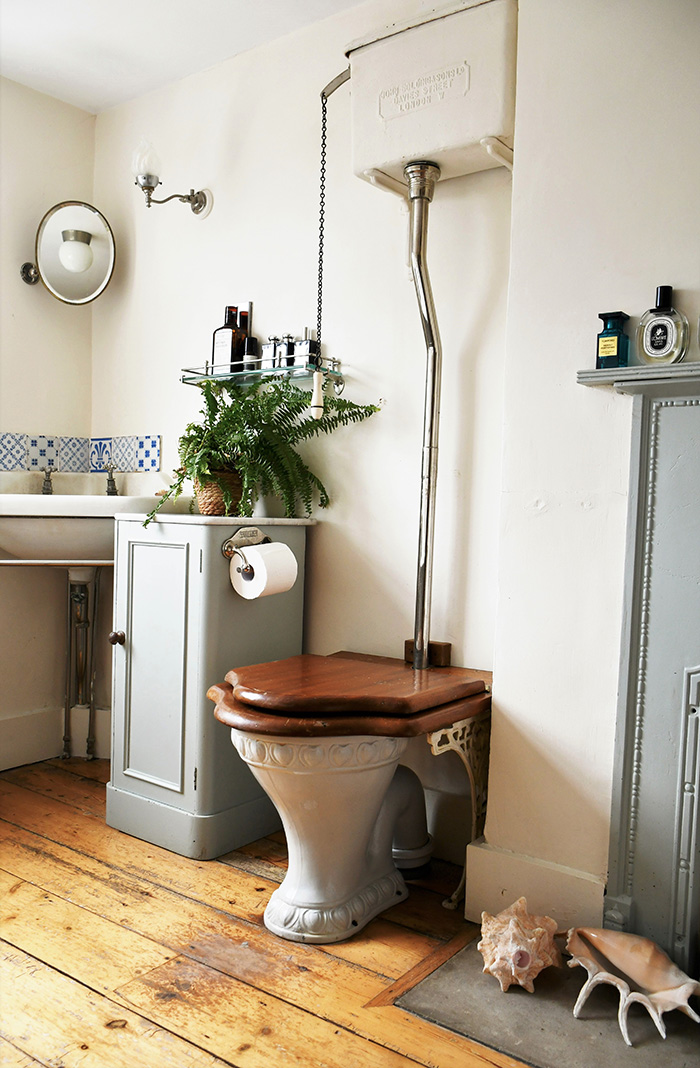
What should be considered when designing and sourcing a reclaimed bathroom?
Most antique and reclaimed pieces can be incorporated into a modern home. However, items may come from different periods and countries, so it’s a good idea to choose a style and period and use similar-aged items together.
Think about space and start with the bath. These come in all shapes and sizes. If you take a bath to relax with an aperitif, then the tub you require will be different to one that’s comfortable to sit up in and read your favourite magazine.
WC pans with high-level cisterns are not only elegant in any bathroom but can also save space. Basins with stands or pedestals are useful if you don’t have solid walls.
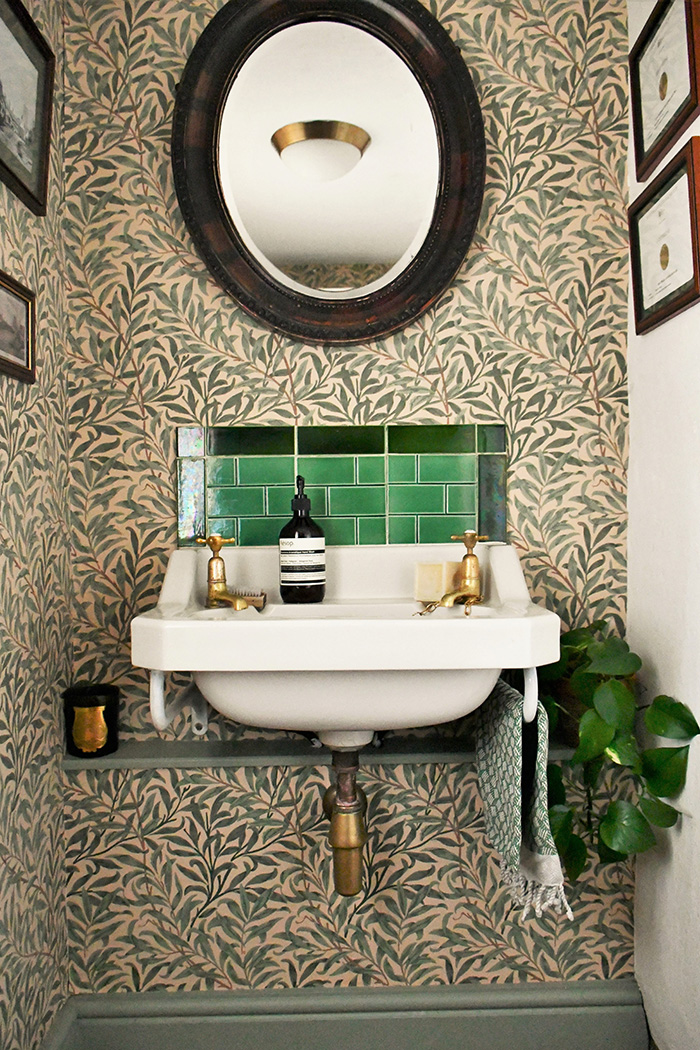
What kind of reclaimed fixtures are available?
Antique sanitaryware will date from the 1880s, but items from the 1930s to the 1950s will be the most commonly found at salvage yards and specialist dealers. Be aware that the older an item is the more expensive it is likely to be.
There’s a huge range of items to choose from in terms of colour, decoration and material. Slipper, bateau or double-ended baths are mainly from Europe and may be harder to find than baths with tap holes at the end. Decorated Victorian items are available but hard to find in good condition. Taps and other fittings are readily available, but shower fittings are hard to find.
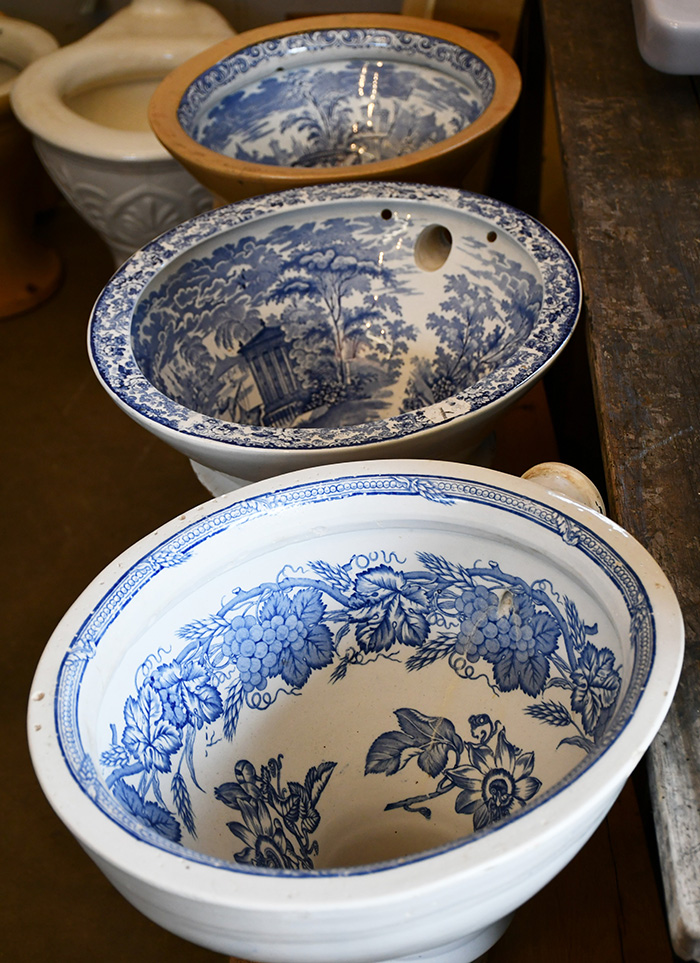
Victorian blue and white transfer-printed toilet bowls/mongersofhingham.co.uk
Will they need to be restored?
Condition is key. Bathrooms and cloakrooms need to be practical spaces and so it’s important that any reclaimed pieces are functional. A specialist dealer will restore items prior to sale. However, if you buy unrestored items, they will need some restoration. Ensure that all taps and other brass is removed prior to any work being carried out and that any resurfacing is done by a specialist prior to installation.
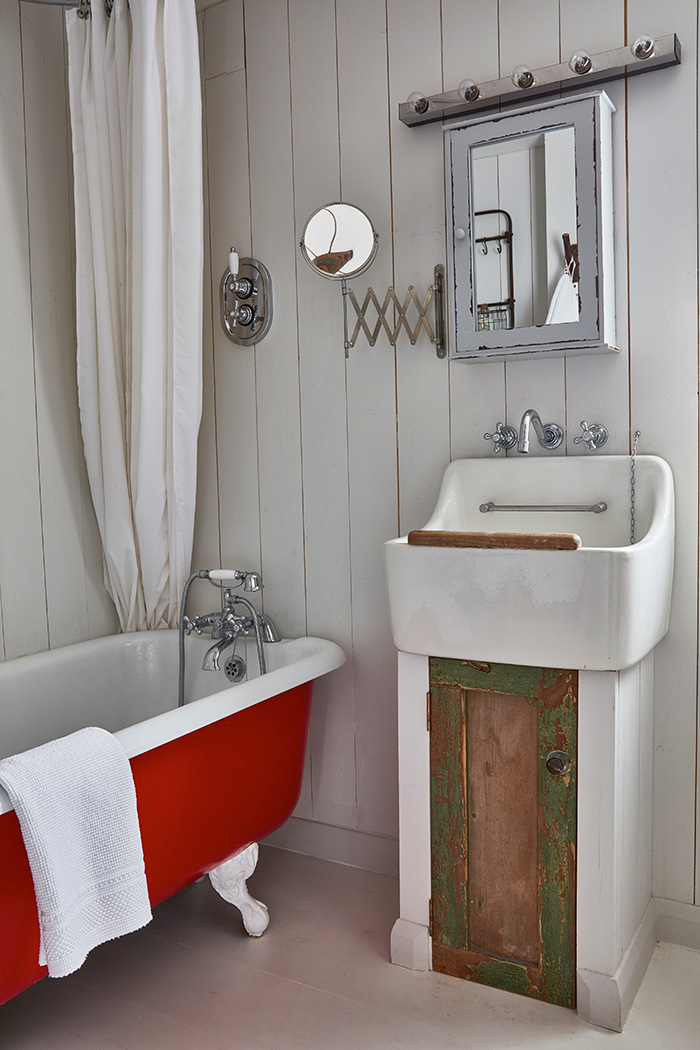
Filly Island/uniquehomestays.com
What needs to be considered in terms of plumbing in older items?
The Victorians invented modern plumbing and exported it around the world. The vast majority of pieces will conform to modern standard sizes as these have never changed. Plumbers will often suggest that you cannot get parts for old cisterns, taps and so on, but this is not true. It’s possible to get most parts for most items, or an alternative. There are some items which will not conform to modern sizes and will require a specialist to adapt them.
Most antique water supplies were gravity fed and ran at a lower pressure to our modern domestic water supply. An antique tap may not cope with this without an overhaul, but most can be made to be functional.
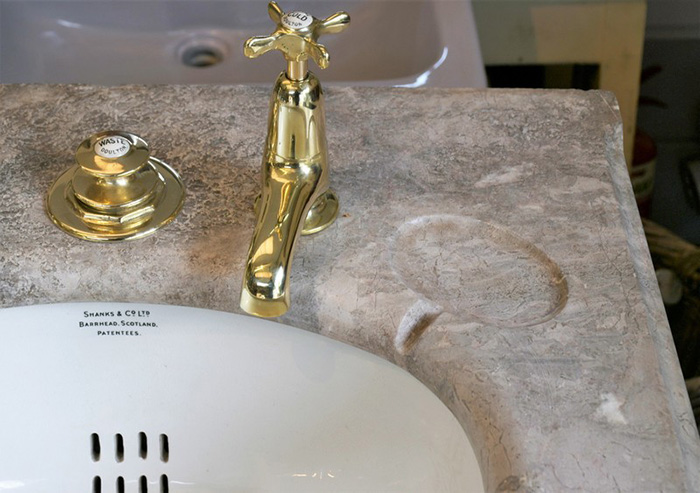
Limestone basin with Royal Doulton taps/mongersofhingham.co.uk
What about aftercare?
Limescale build-up is the worst thing for resurfaced baths and taps, so it’s important to replace washers in dripping taps and dry resurfaced baths after use. In areas of hard water, I’d recommend fitting a water softener. Most modern bathroom cleaners are non-abrasive and can be used for most surfaces, but check the label.
WORDS: AMY BRATLEY
Before you go...
...fancy automatic entry to all future competitions?
Simply register online today for FREE and you will get:
Automatic entry to all current and future competitions.
Access to Reclaim Inspiration - an online visual pinboard for saving all your home and style inspiration.
A regular newsletter of inspiration, ideas and advice.

Save all your articles in one place
Become a Reclaim Member to save all your home and style inspiration. Simply login or register online today for FREE and you will get:
Automatic entry to all current and future competitions.
Access to Reclaim Inspiration - an online visual pinboard for saving all your home and style inspiration.
A regular newsletter of inspiration, ideas and advice.








